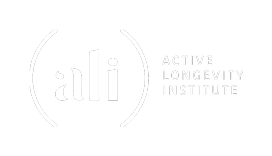Today, investors face the challenge and opportunity of navigating unprecedented demographic and societal change. Population aging, plummeting fertility rates, delayed adulthood, solo living, and women’s growing economic power challenge long-held investment assumptions while presenting new opportunities.
Population Aging
Population aging is about more than a burgeoning number of older consumers. It is also about longer life spans. The average life expectancy worldwide was 60 in 1980; today, it is 73 and is forecasted to be 82 by 2100. Longer life spans do not necessarily mean more years in retirement but potentially more years as workers, consumers, entrepreneurs, volunteers, caregivers, and life stages yet to be imagined.
Global aging has created a new longevity economy of older consumers with unprecedented buying power. If the 60-plus population worldwide were a nation, it would represent the third largest economy after the GDPs of the United States and China, creating vast new markets. The obvious sectors include health care, home care, pharmaceuticals, medical devices, and senior housing. Less attention has been given to how global aging will drive innovations in education for workers who may work for six decades. Technologies, such as collaborative robotics, or cobotics, and robotics, will be in high demand to keep older workers on the job. Rarely explored is the business of fun for older people. More years must mean more than golf and pickleball.
Adulthood Postponed
Traditionally,18 or 21 years old marked adulthood. Today, reaching adulthood extends well into the mid-20s and even 30s. Effectively, a new life stage, emerging adulthood, has evolved. This new stage allows for youthful exploration before committing to adult responsibilities. More young adults are financially reliant on their parents and living with them longer than previous generations. Many delay independence due to prolonged college education. Only 41% complete a four-year college program in four years. Finding a partner and establishing a household, once markers of adulthood, are also postponed, with more than half of young Americans not having a partner by their mid-30s. These new social patterns may explain why the only women showing a modest uptick in fertility are women over ages 35 and 40 years old. These delays have financial consequences, pushing back career starts, income growth, and homeownership, affecting wealth accumulation and shifting traditional adulthood milestones and consumer behaviors to later years.
Delayed adulthood reduces behaviors that investors may assume based on consumer age alone. Delays in establishing new households reduce the demand for appliances, furniture, and home décor. Delays in finding a partner and establishing a family impact home purchasing, mortgage lending, and the need for insurance. In contrast, young adults with fewer financial demands may be a prime market opportunity for the travel, leisure, spa, gym, and self-care industries.
Baby Bust
The assumption of a steady stream of children buttresses traditional markets such as baby and children’s clothing, toys, and foods. Fewer children may also reduce investment in childhood healthcare and medicines and redeployment of capital to cater to a growing aging market. Even today’s education system, from school systems to colleges, may shift from a traditional focus on children and adolescents to focus on upskilling education for people already in the workforce, impacting everything from public bonds to support local school construction to REITs investing in university housing. Likewise, theme parks and entertainment catering to children and families may need to develop a more multigenerational appeal. Pension funds will confront the demands of many more recipients than contributing participants.
New opportunities will emerge. Larger homes near good schools may be in less demand, but smaller homes with more adult amenities will become more attractive. Robotics will be used to replace missing workers on manufacturing floors and farm fields, and artificial intelligence will replace empty cubicles and corner offices due toa shrinking knowledge workforce. Home services will be in higher demand to provide care for elderly adults once traditionally provided by adult children. A smaller but highly lucrative market may emerge in society with fewer children. Parents who choose to have children are likely to seek premium products and services to pamper the child they choose to have.
Solo Living
Solo living will make everything smaller. Large homes and cars may be less in demand. As households shrink, big box stores may find so too will product sizes and retail store sizes. Two or more people in a home often share tasks. With fewer hands, people living solo will seek more services to do tasks typically shared by a couple. Services, including home cleaning, security, maintenance, meal delivery, subscription services, and long-term care, will see growing demand. Living solo does not mean being alone – pets are the new companions, creating new demands for various products and services.
Future Is Female
Traditional roles, not gender, have made women the chief consumer officer of the home. Women significantly influence purchases across various sectors, from automobiles, consumer goods, and foods to home improvement. As mothers and caregivers of older loved ones, women make an estimated 80% to 90% of healthcare decisions, from choosing the family physician and the medications purchased to the insurance selected. Women’s combination of education, growing economic power, and purchasing influence presents a growing opportunity for businesses that can cater to the preferences of female consumers..
Slow and seemingly lackluster demographic change often leads strategists to suffer from change blindness, not seeing transformative shifts hiding in plain sight. But demography is destiny, which may be the only factor investors can truly bank on.
Joseph Coughlin is director of the Massachusetts Institute of Technology AgeLab. Author of “The Longevity Economy: Unlocking the World’s Fastest-Growing, Most Misunderstood Market ” (Public Affairs, 2017). His forthcoming book with MIT Press with MIT’s Luke Yoquinto is “Longevity Hubs: Regional Innovation for Global Aging” (forthcoming, MIT Press, 2024).
This feature is to provide general information only, does not constitute legal or tax advice, and cannot be used or substituted for legal or tax advice. Any opinions of the author do not necessarily reflect the stance of CIO, ISS Stoxx or its affiliates.
